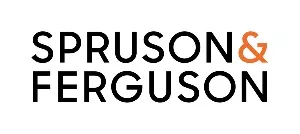- within Privacy topic(s)
- with Senior Company Executives, HR and Finance and Tax Executives
- with readers working within the Banking & Credit, Healthcare and Technology industries
Copyright/Design Overlap: Yacht plugs as works of artistic craftsmanship?
Burge v Swarbrick [2007] HCA 17
Mr Swarbrick has designed numerous yachts including a 30 foot sports boat marketed as the “JS 9000” in Australia.
Boldgold Investments manufactured competitive boats to the JS 9000 using the hull and deck mouldings developed for the JS 9000. These mouldings had been obtained (in disputed circumstances) by two former employees of Mr Swarbrick and applied in the competitive Boldgold business.
Mr Swarbrick had not registered the design of the mouldings or the plug used to create the mouldings under the Designs Act 1906. He asserted that the design for the plug and the mouldings were “works of artistic craftsmanship” and therefore protected under Australian copyright law. If Mr Swarbrick’s argument failed, he would have no protection due to the provisions in the Copyright Act 1968 removing copyright protection for items registrable as designs (other than works of artistic craftsmanship). The removal of copyright protection applies whether or not the item is in fact registered as a design.
The matter came before the High Court on appeal. The High Court held that whether an item is a work of artistic craftsmanship “does not turn on assessing the beauty or aesthetic appeal of [the] work or on assessing any harmony between its visual appeal and its utility. The determination turns on assessing the extent to which the particular work’s artistic expression, in its form, is unconstrained by functional considerations.”
The High Court concluded that Mr Swarbrick’s design was substantially dictated by functional considerations, namely to meet the requirements of the design brief for a well mannered, easily balanced boat that was fast by contemporary standards. The aesthetic appeal of the look of the resulting sports boat was a secondary concern.
It followed that the design of the plug (and the derivative moulds) was held not to constitute a work of artistic craftsmanship for the purposes of attracting copyright protection. Mr Swarbrick therefore had neither copyright protection (due to the High Court’s conclusion on the work of artistic craftsmanship) nor designs protection (due to his failure to register his design).
Crown Copyright in Registered Survey Plans
Copyright Agency Limited v State of NSW [2007] FCAFC 80
In this case, the Full Federal Court of Australia was asked to consider the crown copyright provisions contained in the Copyright Act 1968.
The Copyright Agency Limited (CAL) is an Australian collecting society whose members include members of the Australian Consulting Surveyors Association.
For the creation of or dealings in interests in land in New South Wales, survey plans must be created and registered with Land and Property Information (LPI), the property rights registration instrumentality of the NSW State Government. Once registered, copies of the survey plans must be made available to the public by law and are also incorporated as part of a central electronic cadastral database for use by certain state and local government instrumentalities and utility companies. The survey plans and this database may also be accessed by members of the public and information brokers for a fee.
CAL sought a determination from the Copyright Tribunal as to the amount of royalties that the NSW State Government should have to pay to the copyright owners for the use of the survey plans. The Copyright Tribunal referred certain questions of law to the Federal Court of Australia for determination including as to whether the copyright in survey plans was owned by the Crown.
In general terms, sections 176(2) and 177 of the Copyright Act 1968 provide that the State is the owner of the copyright in an artistic work if made, or if first published in Australia, by or under the direction or control of the State. The State argued that the survey plans had been produced to meet its extensive requirements for registration of survey plans and had been first published by it as part of the central database or otherwise.
The Court declined to adopt this reasoning and found that for the State to be able to assert crown copyright in a work, the State must “bring about the making of the work”. Here the survey plans were not bought into existence by or at the direction of the State even though the content and form of the plans were subject to extensive regulatory requirements imposed by the State. They were prepared by the surveyor to satisfy the contractual obligation of the surveyor to his or her client.
In the words of Justice Emmett, “The Parliament did not intend that the Crown would gain copyright, or share in copyright, simply as a side effect of a person obtaining a statutory or other regulatory approval or licence from the Crown.”
Further, the survey plans were not first published by the State but were provided by the surveyor to the owner of the land for signature and, in respect of subdivisions, the local municipal council as a prerequisite to registration. This constituted first publication that preceded any publication by the State.
However, the Court went on to hold that the State had an implied licence to use the survey plans to do everything that the State is authorised or obliged to do in relation to registered plans. So, in the end result the State was not required to pay royalties for the use of the survey plans but due to the implied licence, not Crown copyright.
TV Guides and Compilation Copyright
Nine Network Australia Pty Limited v IceTV Pty Limited [2007] FCA 1172
The Nine Network is a prominent free to air television broadcaster in Australia. It provides a weekly viewing schedule to various authorised third party aggregators for the compilation and dissemination of TV program guides for both the Nine Network’s upcoming programming and that of other free to air broadcasters.
IceTV provides a subscription based electronic TV program guide called the “IceGuide”. IceTV does not receive any viewing schedules directly from the Nine Network or the authorised aggregators. Instead, it “predicts” the likely programming using a software program and then checks its predictions against the publicly available TV program guides, making any changes as required.
The Nine Network asserted that IceTV had infringed its copyright in the compilation of the weekly programming schedule and in the reproduction of the program name, title and date of broadcast information.
Justice Bennett of the Federal Court of Australia held that the IceGuide was not an infringement of Nine Network’s copyright in the weekly viewing schedule. Her Honour found that the Nine Network’s copyright only subsisted in the whole compilation of the weekly programming schedule and not in its separate constituents being the details of the individual TV programs.
On the evidence given, IceTV had not taken advantage of the skill and labour of the Nine Network in the selection, scheduling and arrangement of its programs given that the IceGuide was largely independently generated by its own predictive software fleshed out by independent research by its own writers.
Further, the reproduction by IceTV of only “slivers” of certain program information contained in the Nine Network’s weekly viewing schedule necessary to correct the predictions made by its predictive software was not held to infringe the Nine Network’s copyright. These slivers were not a reproduction of a substantial part of the weekly viewing schedule provided by the Nine Network reproduced in the aggregate publicly available TV program guides and accessed by IceTV.
The content of this article is intended to provide a general guide to the subject matter. Specialist advice should be sought about your specific circumstances.


